
Link
Brief:
The problem we were tasked with remedying was a mental health issue. My assigned issue was low self-esteem. The assigned antidote was “keep learning”. I aimed to design a 100-day low self-esteem tool kit centered around a learning theme.
Additionally, my target audience where 27-30-year-old women who struggled with low self-esteem and related anxiety. In this design, I would also have to account for my user’s personal likes and time availability.
Research :
I started by getting an overview of low self-esteem as a topic and investigating the causes. Such as defining low self-esteem, as well as common events that trigger it. I then explored the effects that low self-esteem has on an individual and how it manifests in daily life to gain a better understanding of how to create a solution.
I also investigated ways to support someone with low self-esteem. For this section of the research I mainly used health organizations such as the NHS and Mind. org to form my understanding. I found the 5 strategies to improve low self- esteem listed on the NHS. The included strategies are “be kind to yourself”, “acknowledge what you are good at”, “build positive relationships”, “give yourself a challenge” and “be assertive”. Later used these strategies as the topics of the task cards
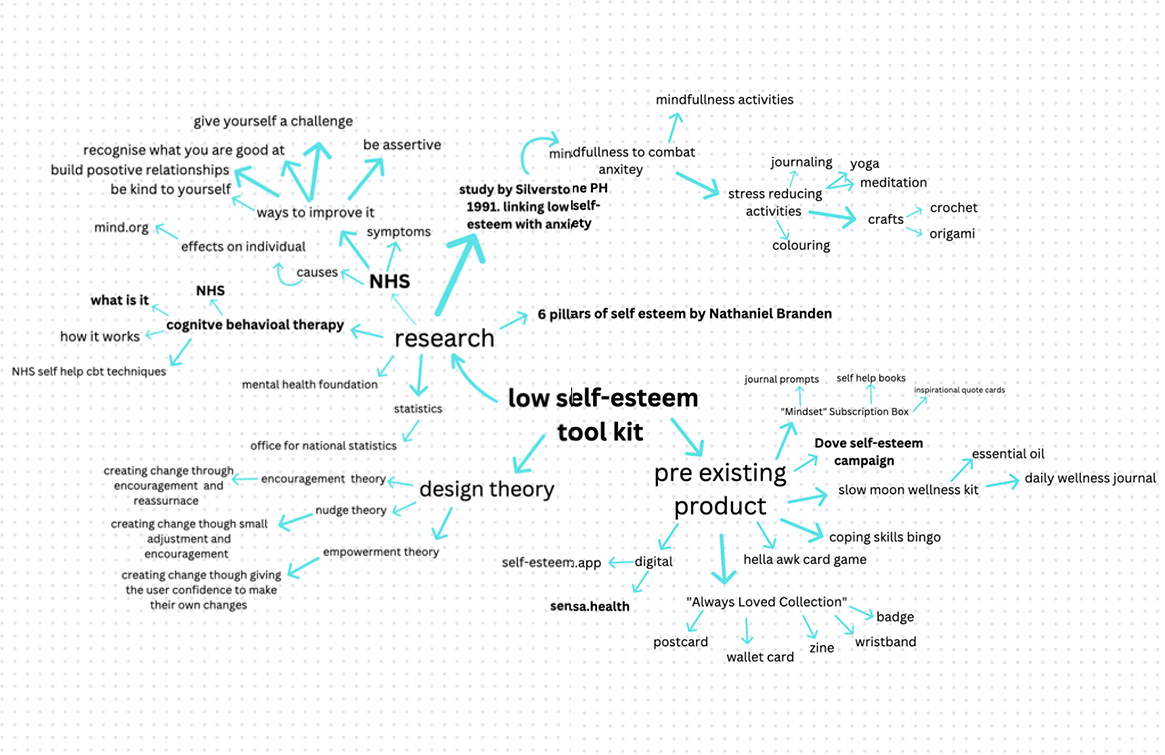
Idea generation:
I then started generating different tool kit variations each with different themes.
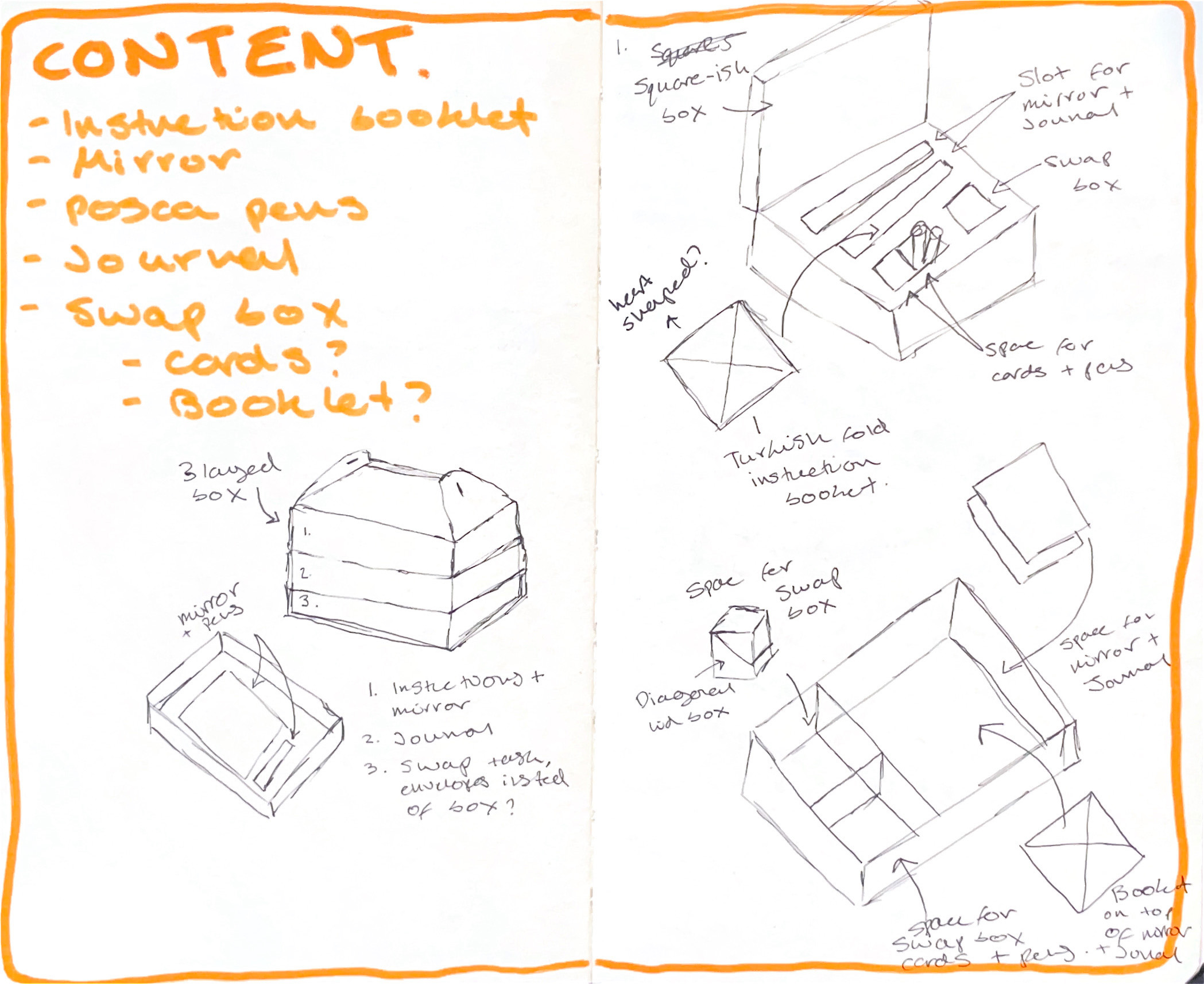
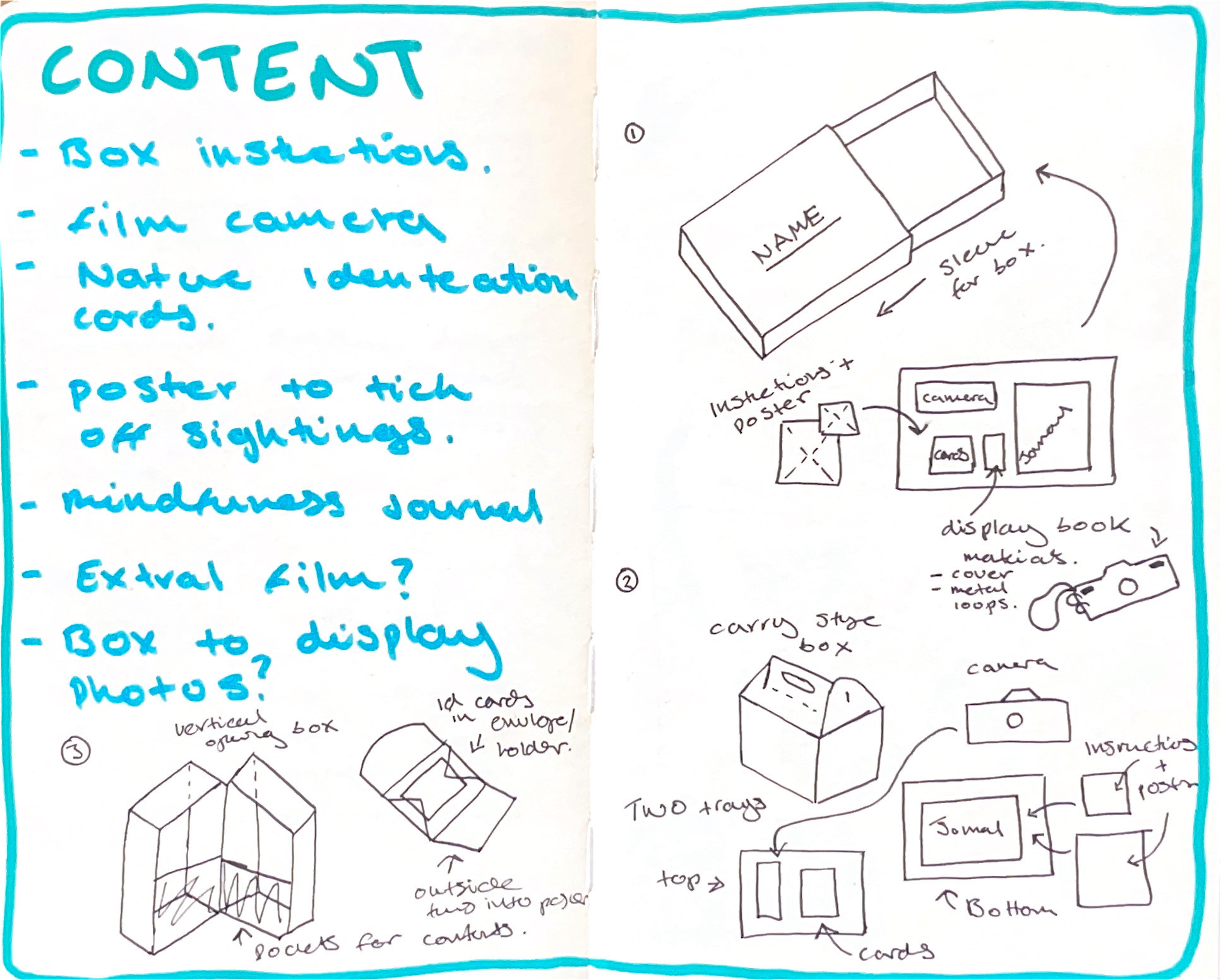
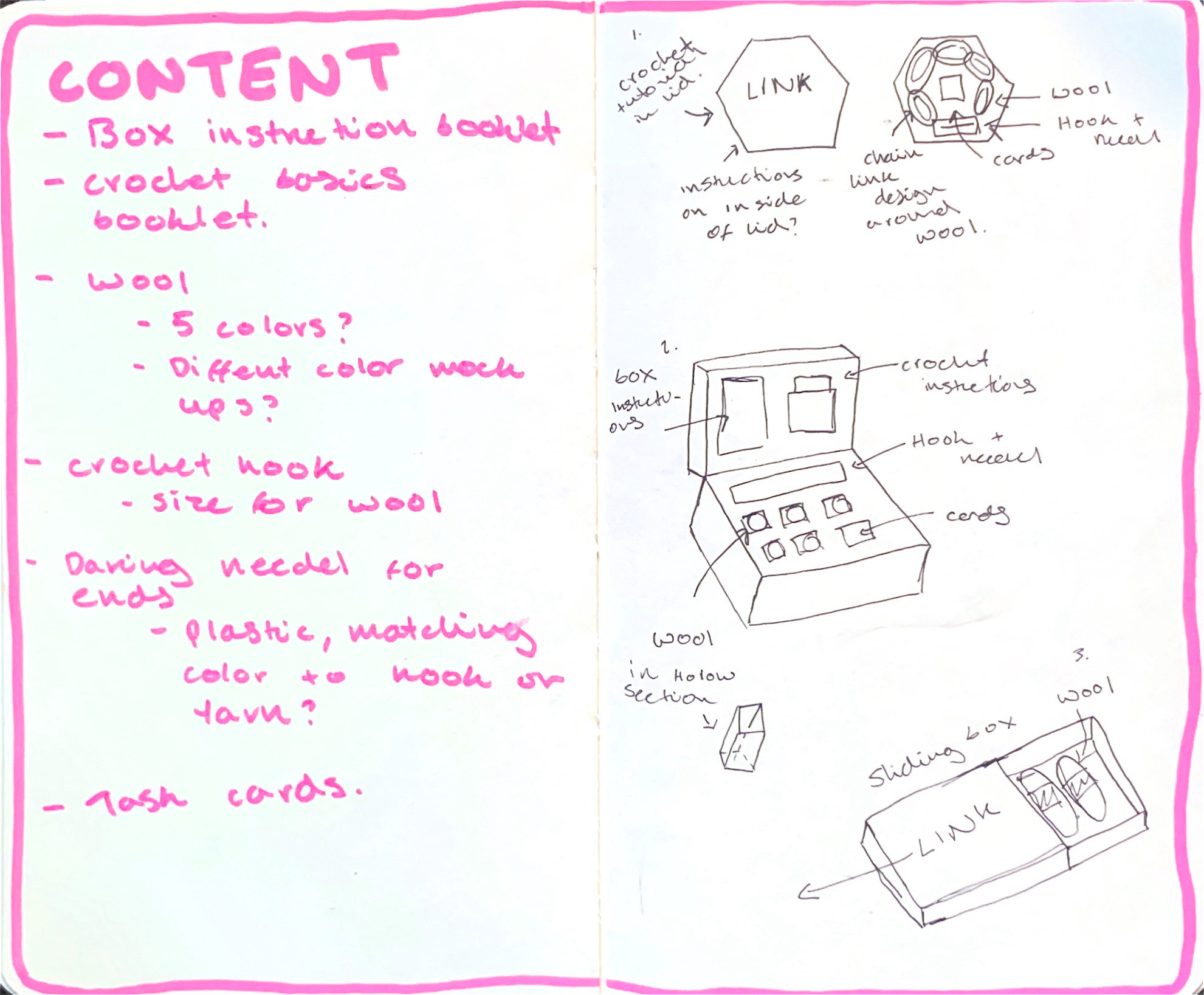
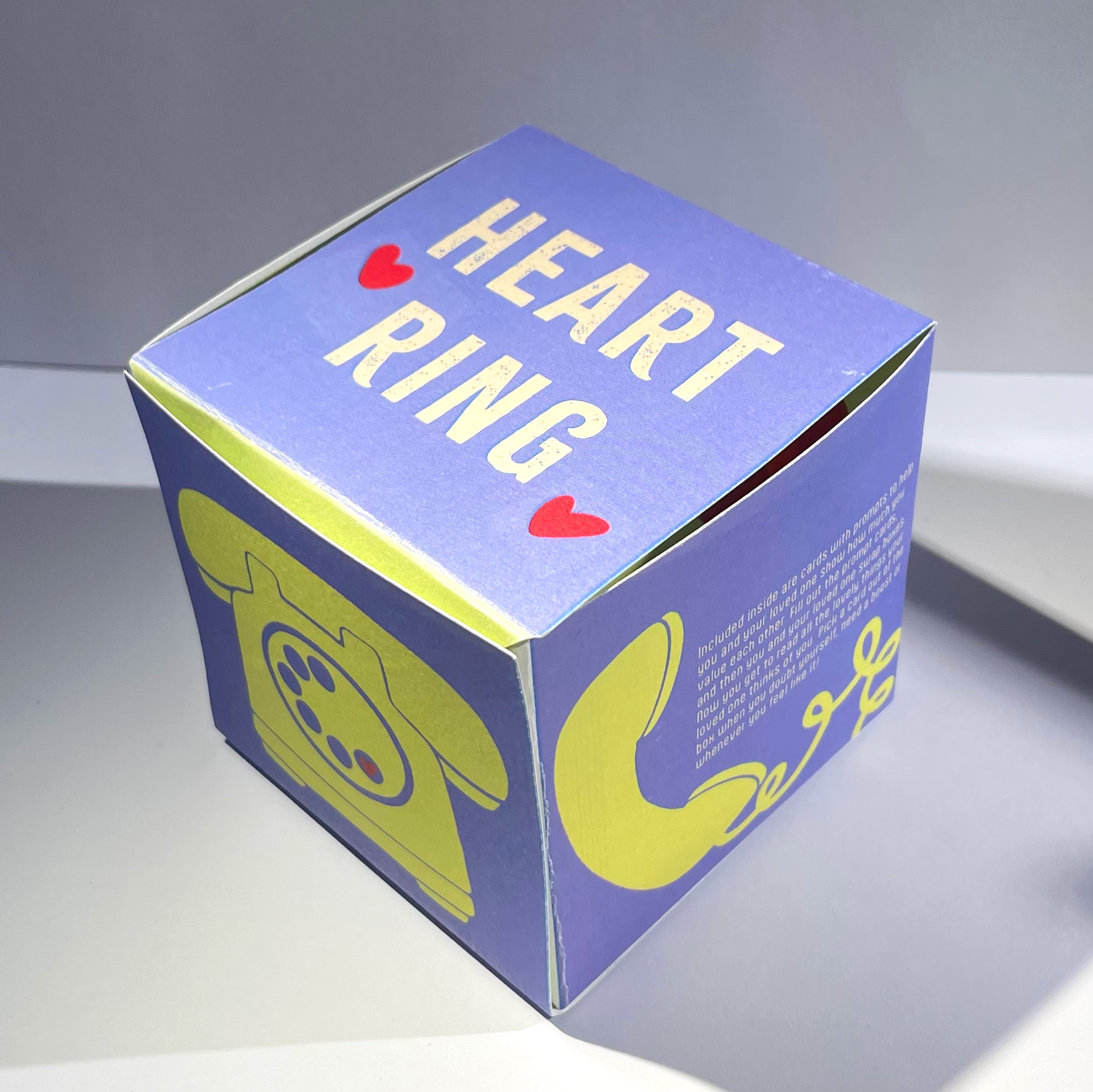
The Heart Ring swap boxes help raise the user’s self-esteem “through a game of telephone”. Inside the box is a series of cards with prompts that are to be filled out by the user and a loved one. The cards aim to show the user how valued they are. The cards have prompts centering around 3 of the ways to improve self-esteem listed on the NHS website, “be kind to yourself”, “build positive relationships” and “recognize what you are good at”. The user and their loved one then swap boxes and get to read all the positive things they wrote about each other. The user can pick a card out of the box when they are doubting themselves, need a boost, or whenever they feel like it.
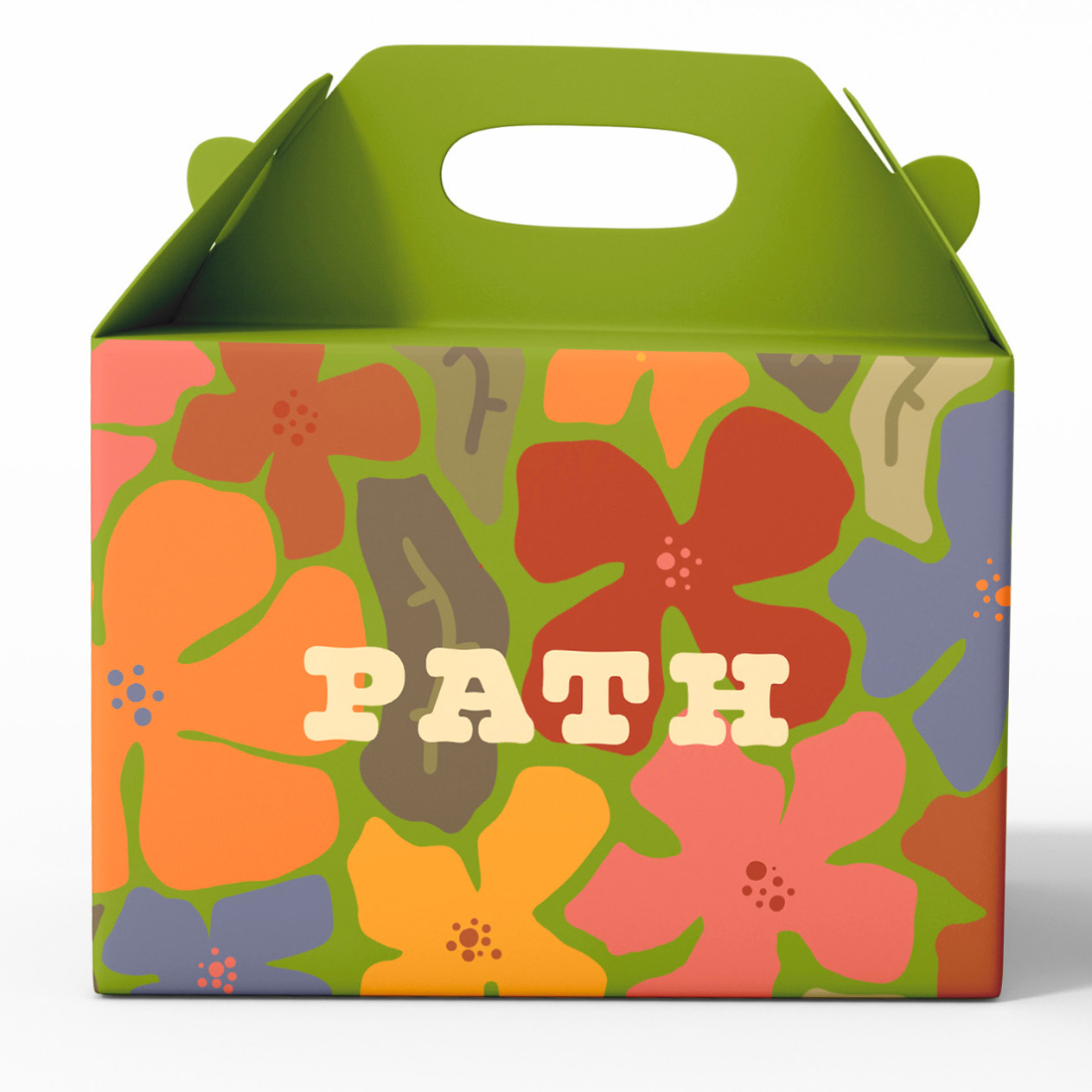
This box is centered around nature and is ideal to use on dog walks. This box would contain Animal ID cards and a disposable camera for the user to photograph their sightings. As well as a poster to tick off each animal after they spot it. The ID cards would include tell-tale characteristics of local British wildlife, a brief description, and a fun fact. The kit also includes a mindfulness journal. The journal includes mindfulness activities, encouraging the user to visualize the nature they have seen on their walks, as a way to regulate anxiety.
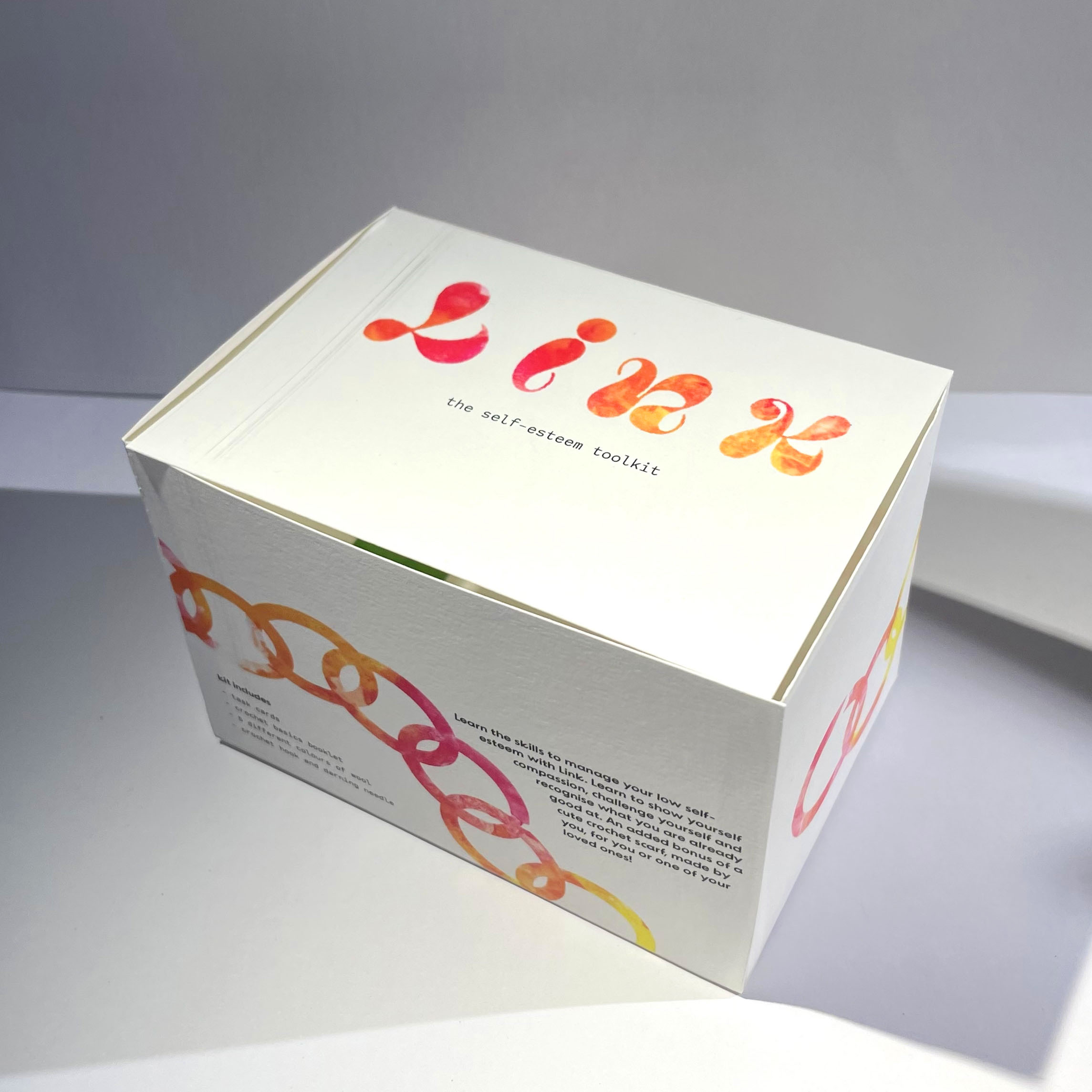
Included in the box is a set of 100 task cards. These cards have tasks on them that relate to the five ways to improve self-esteem listed on the NHS website. The categories include “Give yourself a challenge”, “Be kind to yourself”, “Build positive relationships”, “Recognise what you are good at”, and “Be assertive”. For example, a card from the “Give yourself a challenge” category has a sudoku to solve. The colours of the cards correspond to the colour of the wool to be used that day. The cards will be in a random colour order and the use will pick one at random each day, to keep the tasks exciting and to create a unique crochet pattern. Additionally this box will incude an insturtion booklet and a a crochet basics booklet.
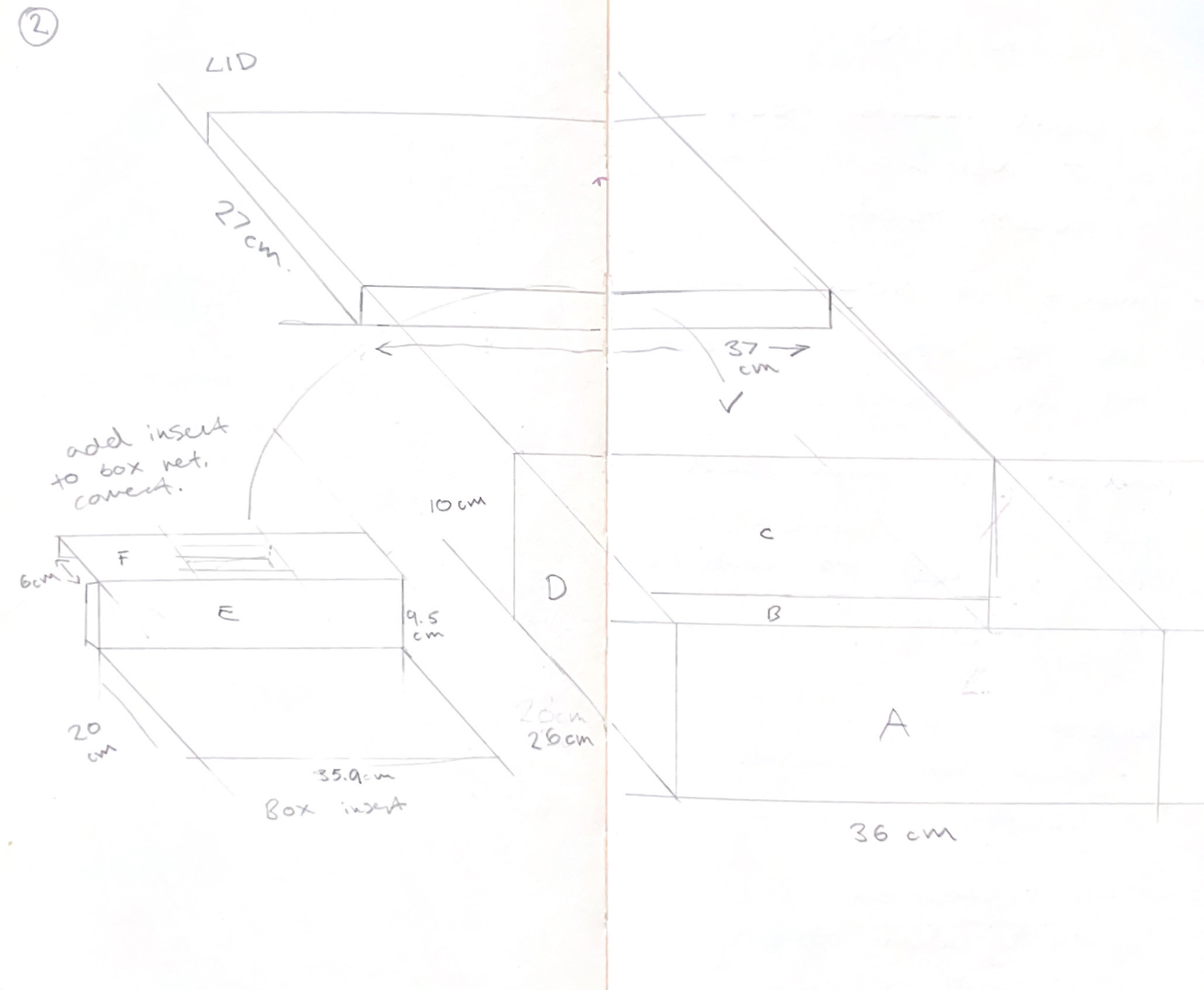
Development :
I chose the name “Link” because the word is synonymous with connection. It also relates to crochet because of the chain link patterns and stitches used to build a piece. I liked the packaging and shape of prototype one. However, after measuring out the dimension of the wool, I realized that the box would need to be 25-30 cm deep to fit the wool vertically, and I felt that that was too large.
I decided to redesign the box (Prototype 2) and fit the wool horizontally to make the box smaller. To prototype two I also added a raised section within the box. This acts as space to store the cards as well as a divider to keep the wool snug in place within the box. Additionally, I also reworked the task cards refining the colour and font.
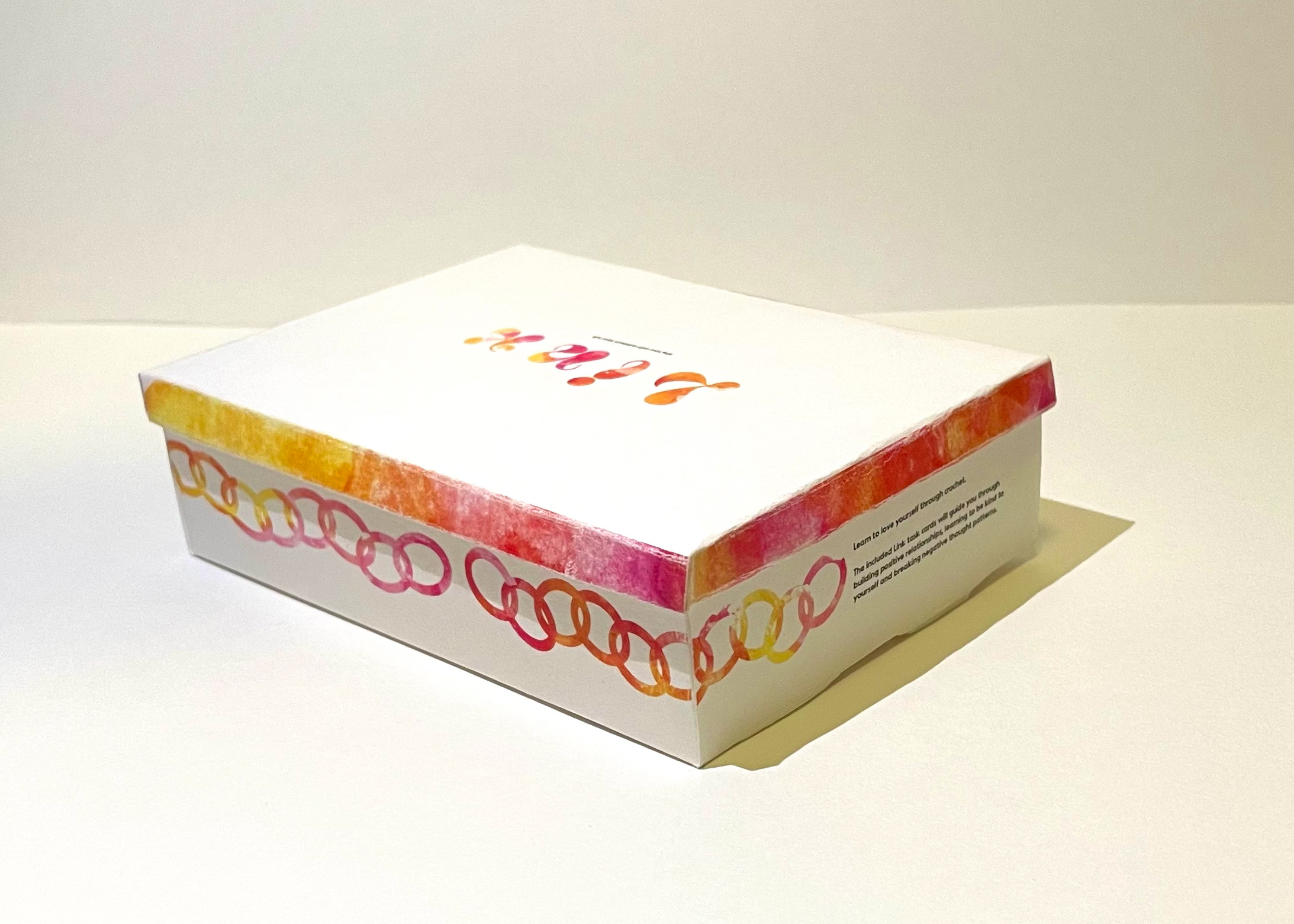
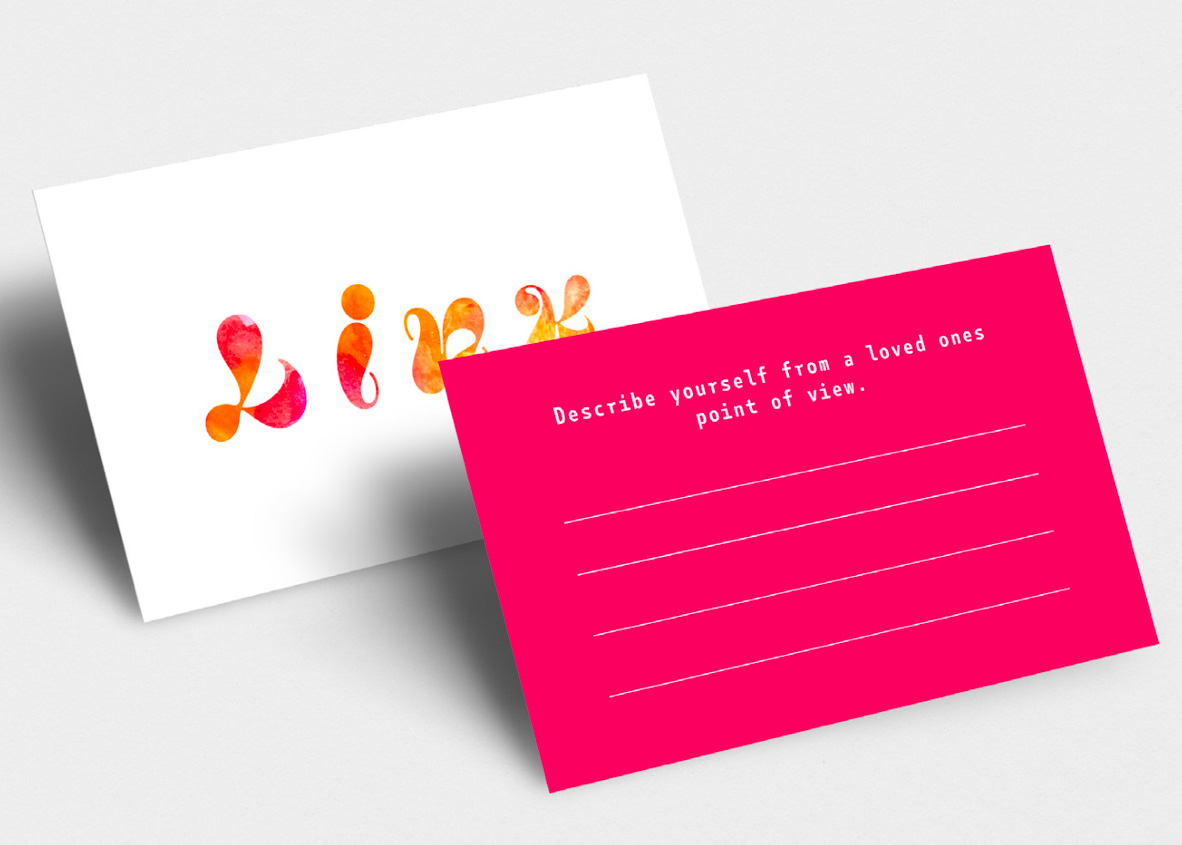
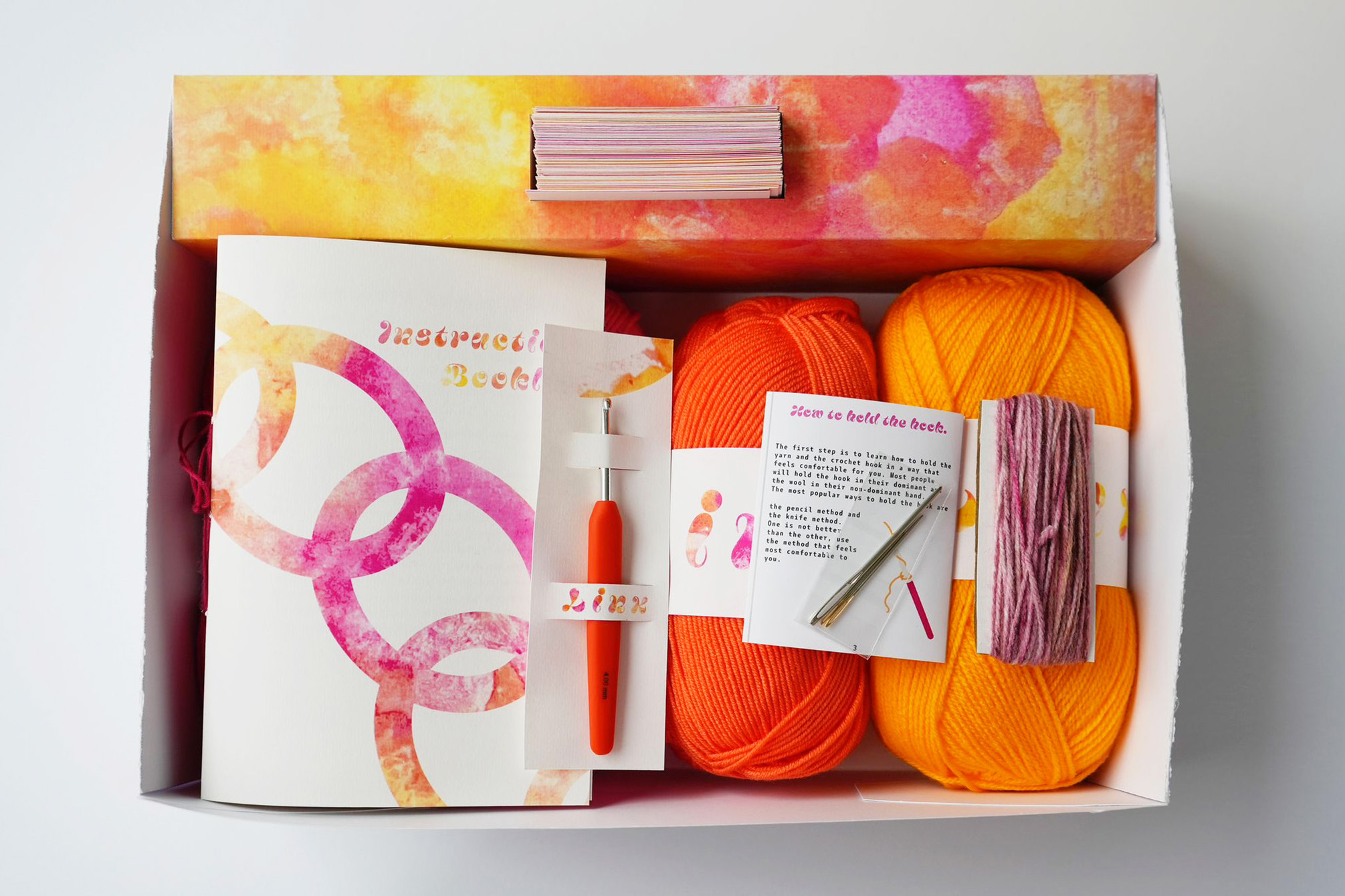
Final Outcome
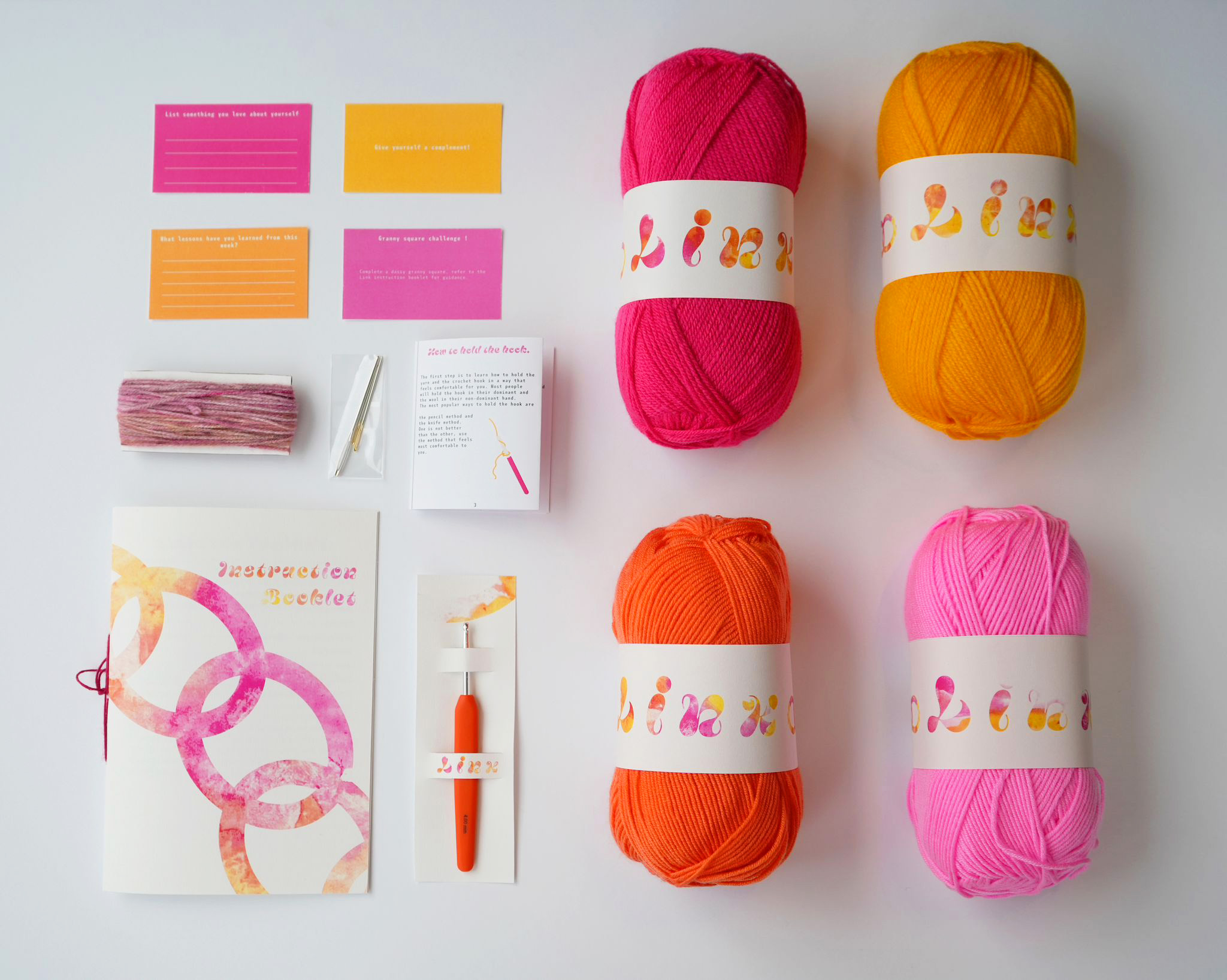

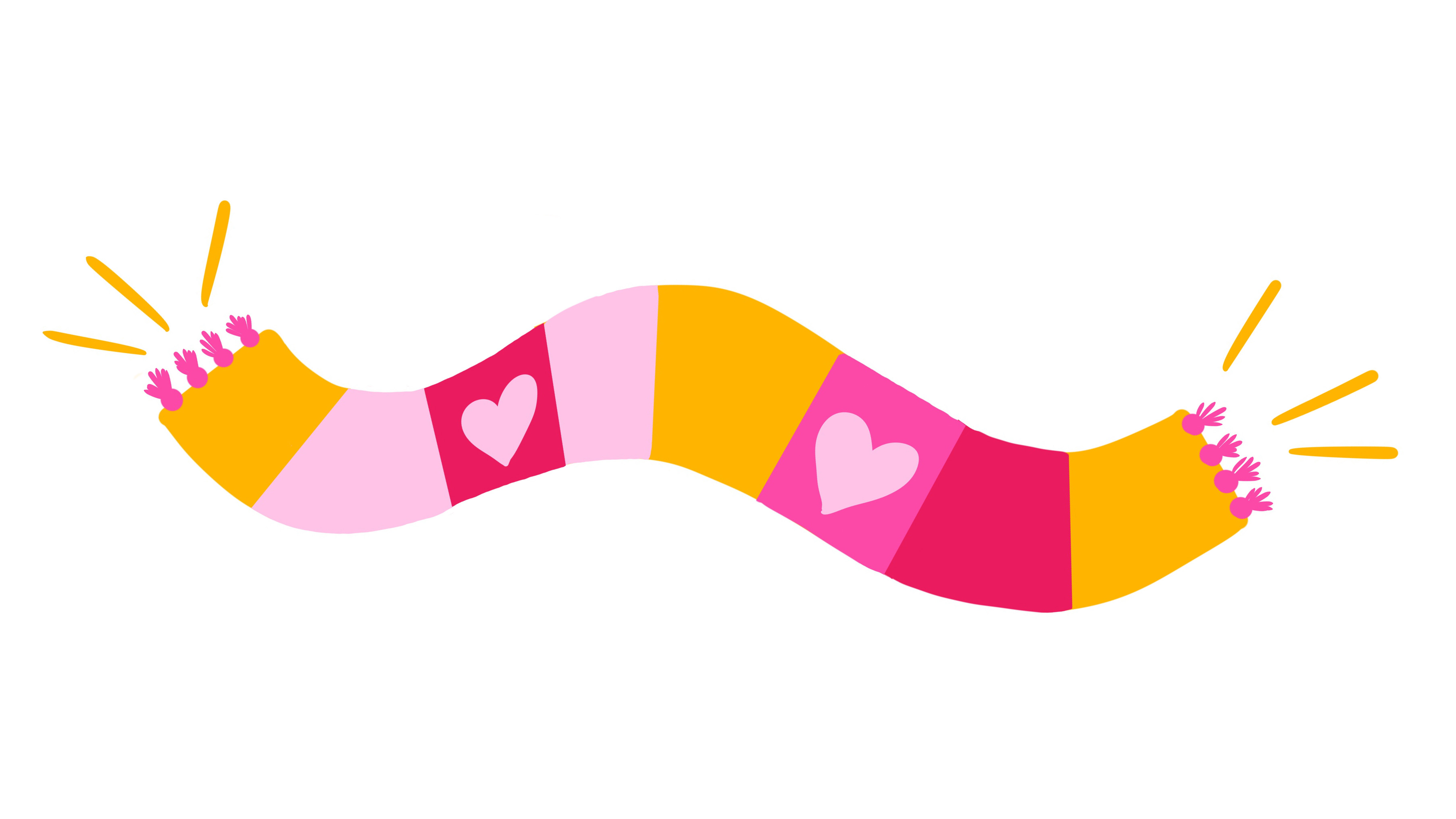
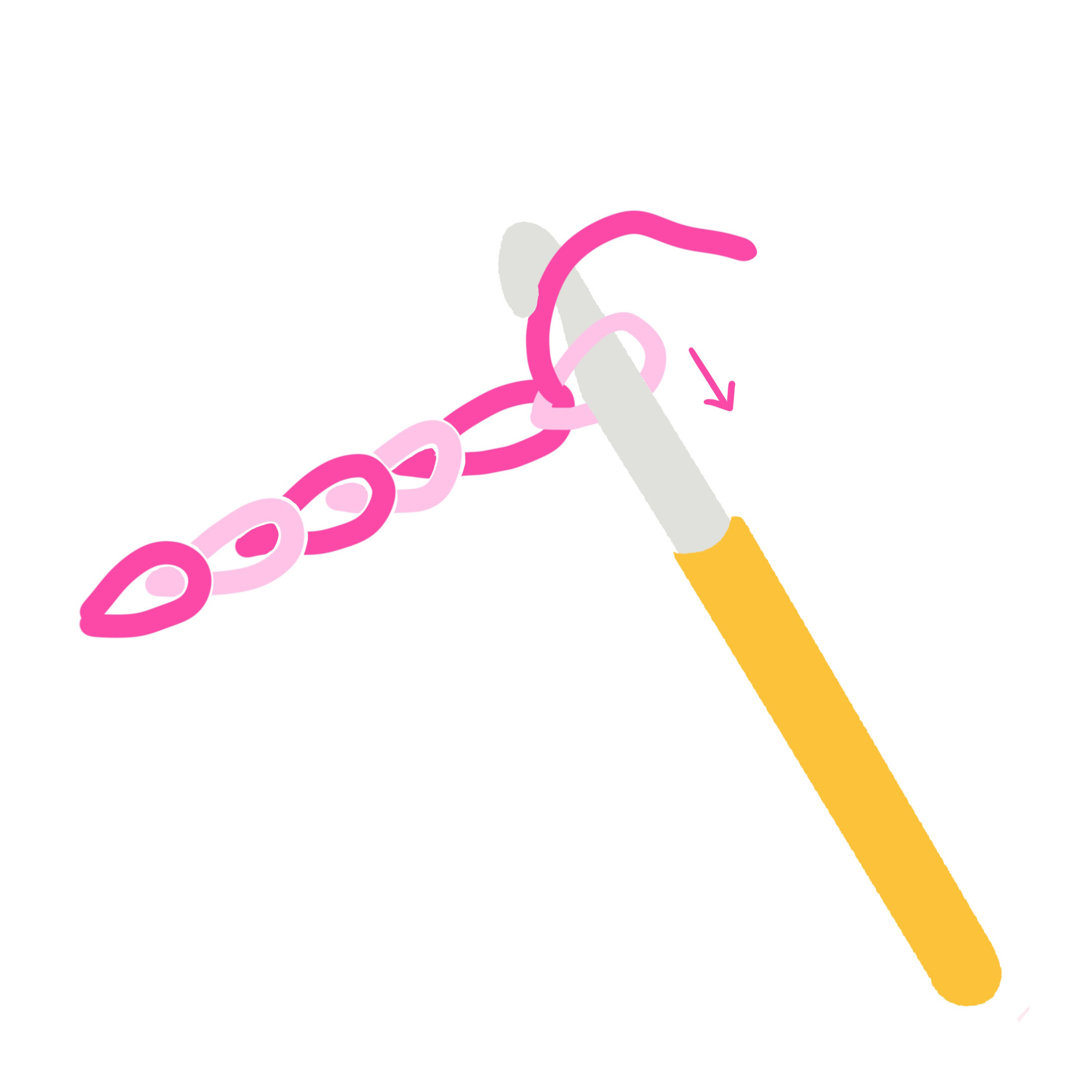

Within the tool kit, there is an instruction booklet, a crochet basics booklet, 100 daily task cards, a crochet hook, darning needles (to weave in ends), 4 balls of regular yarn, and a skein of the special reward yarn. The instruction booklet includes a basic introduction to the box, mentioning the aim of the kit and the contents. It includes a “how it works” section that breaks down the 5 strategies to improve low self-esteem listed on the NHS website that I used to help dictate the contents of the task cards. This section also explains what CBT is and how it has been integrated into the kit. The instruction book also includes a How to Get Started section that breaks down the types of tasks listed on the task cards. The booklet also explains the reward system to the user. For every 10 cards completed and rows, they crochet the user should reward themselves. They also mark this milestone by crocheting a row using the special reward yarn.
The last section of the instruction booklet provides the patterns for the granny square challenges seen on 4 of the task cards. The purpose of the granny square challenges is to further push the users' learning and give them a more challenging crochet task. These tasks also ensure that the user won’t get bored. These granny square challenges can be added to the scarf design when completed to add extra pizzazz. The kit also includes a crochet basics booklet. This booklet walks the user through the anatomy of the hook, how to hold the hook, how to hold the yarn, how to tie a slip knot, how to make a chain, how to work into the chain, the single crochet stitch, how to make a turning chain, working into row two and how to fasten off.
Bibliography
Branden, N. (1994). The six pillars of self-esteem. New York ; London: Bantam
Kaur, D.M.W., Dr Hardeep (2021). Low Self-Esteem. [online] Psychology Tools. Available at: https://www.psychologytools.com/self-help/low-self-esteem/
Martinez, H. (2022). What Is Social Empowerment? Empowerment Theory | United Way NCA. [online] United Way NCA. Available at: https://unitedwaynca.org/blog/ social-empowerment/.
Mind (2021). What is cognitive behavioural therapy (CBT)? [online] www.mind.org.uk. Available at: https://www.mind.org.uk/information-support/drugs-and-treatments/ talking-therapy-and-counselling/cognitive-behavioural-therapy-cbt/#WhatIsCBT
NHS (2021). Raising low self-esteem. [online] NHS. Available at: https://www.nhs.uk/mental-health/self-help/tips-and-support/raise-low-self-esteem/
NHS (2022a). Cognitive Behavioural Therapy (CBT). [online] NHS. Available at: https://www.nhs.uk/mental-health/talking-therapies-medicine-treatments/talking- therapies-and-counselling/cognitive-behavioural-therapy-cbt/overview/
Silverstone, P.H. (1991). Low self-esteem in different psychiatric conditions. British Journal of Clinical Psychology, 30(2), pp.185–188. doi:https://doi. org/10.1111/j.2044-8260.1991.tb00936.x.